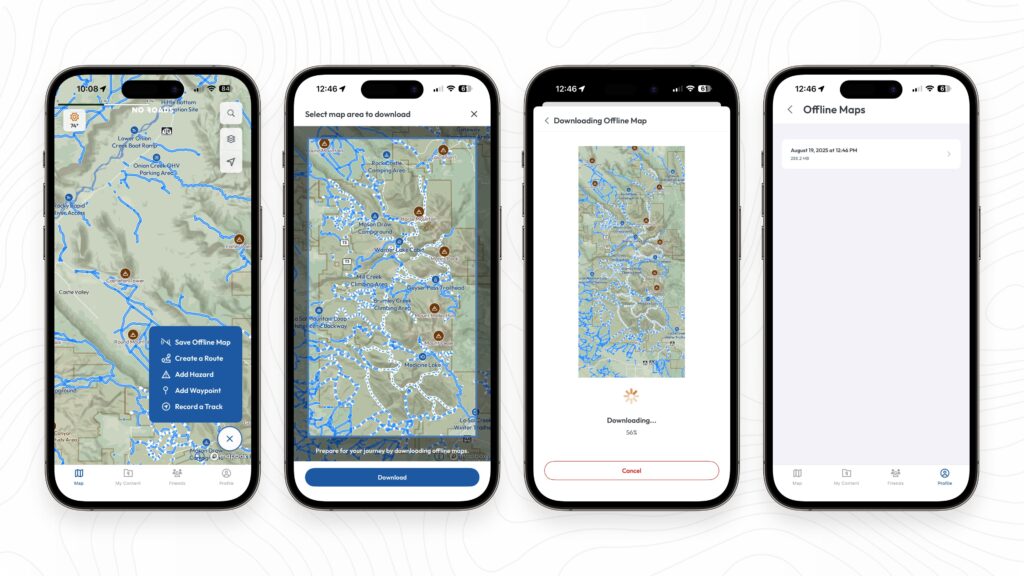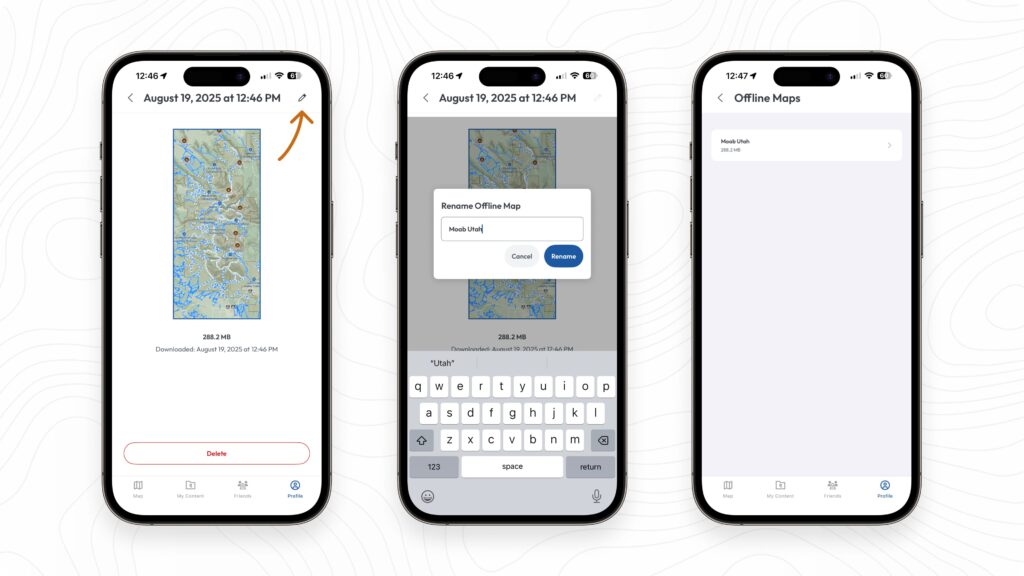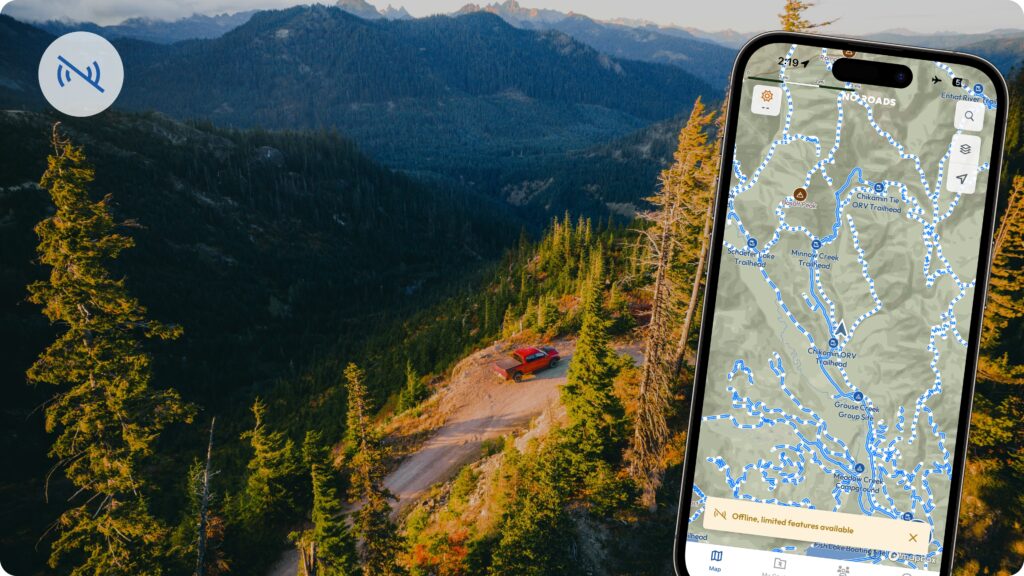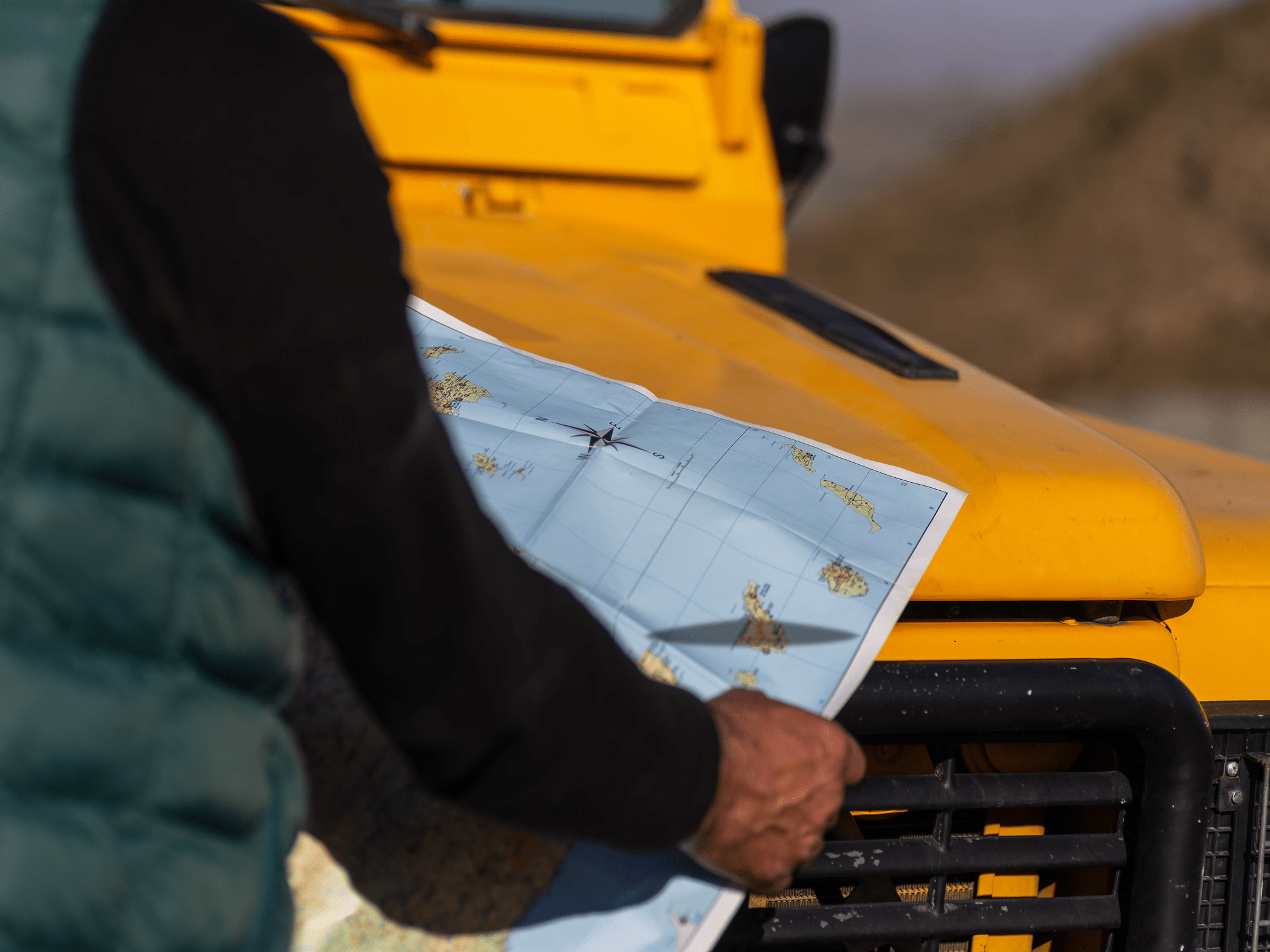The best adventures often happen where cell towers fear to tread. Deep canyon trails where signal dies at the first bend. Remote mountain passes where the nearest tower is fifty miles away. Coastal routes where the only connection is the horizon.
For off-road adventurers, losing signal isn’t just an inconvenience—it’s a reality. And when you’re miles from the nearest road with daylight fading and unfamiliar terrain ahead, having reliable maps isn’t just convenient. It’s essential.
The reality of off-grid adventures
You never know when you’ll find yourself without signal. That trail that showed full bars at the trailhead might wind into a dead zone just a few miles in. The route that’s always had coverage could be affected by weather, equipment failures, or increased network traffic.
Even experienced adventurers can find themselves in unfamiliar territory. Maybe you took an unexpected detour around a washout. Perhaps that “quick side trail” turned into a longer exploration than planned. Or you’re riding with a group and everyone assumed someone else knew the way back.
These moments don’t have to become emergencies. With offline mapping, you maintain access to detailed trail information, your planned routes, and your waypoints—even when your signal disappears.
What offline mapping gives you
Complete trail access: When you download an offline map region, you’re not just getting a basic road map. You get the complete No Roads experience for that area—detailed trail data, points of interest, elevation information, and all your personal waypoints and tracks.
Reliable navigation: Your phone’s GPS receiver works independently of cell coverage, so as long as your device can receive GPS signals, you can see where you are on the map. Combined with offline trail data, you have the tools needed to navigate confidently even when cell signal is unavailable.
Trip continuity: Started planning your route online? Your waypoints, saved trails, and collections are available offline in your downloaded regions. The preparation you did at home stays with you on the trail.
Peace of mind: Knowing you have detailed maps regardless of signal conditions lets you focus on enjoying the adventure instead of worrying about getting lost.
How to download offline maps in No Roads

Being prepared starts before you leave home. Here’s how to download the maps you’ll need:
Step 1: Plan your download area Open No Roads and navigate to the region where you’ll be adventuring. Think bigger than just your planned route—include surrounding areas in case you need to detour or explore side trails.
Step 2: Start the download Tap the blue plus button in the lower right corner, then select “Save offline map.”
Step 3: Select your region Pan and zoom to cover the entire area you might explore. The selection box shows exactly what will be downloaded. Include extra buffer space around your planned routes—you’ll thank yourself later if conditions force a change of plans.
Step 4: Download and wait Tap “Download” and let No Roads prepare your offline maps. Larger areas take longer to download, so start this process while you’re on reliable wifi rather than trying to download over cellular data at the trailhead.
Managing your offline maps Once downloaded, your maps work automatically—no need to activate anything or navigate to a different section of the app. The data simply becomes available on your regular map view.
To manage your offline maps later, go to your profile, tap settings in the upper right corner, and select “Offline maps.” Here you can view all your downloaded regions, see details like file size and download date, edit map names using the pencil icon, or delete maps you no longer need.

Storage and optimization
No Roads offline maps are optimized to provide maximum detail while minimizing storage impact. You can download multiple regions without quickly filling your device storage.
That said, consider your device’s available space when planning downloads. A weekend trip might need one modest region, while a week-long expedition could require several larger areas. Download what you need, when you need it, and clean up old downloads after your adventures to keep storage manageable.
Keeping your maps current
Trail conditions change. New trails get added. Access points shift. While you don’t need to update offline maps constantly, refreshing them quarterly or twice yearly ensures you have the latest trail data and improvements.
Before major trips, consider downloading fresh versions of your offline regions, especially if it’s been several months since your last update. The few minutes spent updating could save hours of confusion on unfamiliar trails.
What works offline and what doesn’t
With offline maps downloaded, most of No Roads core functionality remains available:
Available offline:
- Complete trail maps and point of interest data for your downloaded regions
- Your waypoints, tracks, and collections within downloaded areas
- Track recording with full telemetry data
- Waypoint creation and editing
- Navigation using your device’s GPS position (when GPS signals are available)
Limited or unavailable offline:
- Real-time hazard reports from the community
- Weather updates and overlays
- Friend tracking and social features
- Map regions outside your downloaded areas
No Roads also intelligently caches data around your downloaded regions, so you might have limited access to nearby areas even without specific downloads for those locations.
Building your offline strategy

Start local: Begin by downloading maps for areas you adventure in regularly. This builds familiarity with the offline experience in places you know well.
Plan for contingencies: Download broader areas than just your planned route. Trail conditions might force detours, or you might discover an interesting side trail worth exploring.
Consider trip duration: Weekend trips need different coverage than week-long expeditions. Plan your downloads to match your adventure scope.
Check before you go: Make downloading offline maps part of your pre-trip checklist, right alongside checking tire pressure and packing emergency supplies.
Preparation equals confidence
Offline mapping isn’t about expecting the worst—it’s about being prepared for reality. Cell coverage is spotty in the places where the best adventures happen. Weather changes. Equipment fails. Trail conditions shift.
But when you’re prepared with offline maps, these challenges become minor inconveniences rather than major problems. You maintain access to the navigation tools you need, the trail information that keeps you informed, and the waypoints that guide you home.
Download before you need it
The time to download offline maps isn’t when you realize you don’t have signal. It’s during your trip planning, while you’re on reliable wifi, thinking through your adventure and the areas you might explore.
Make offline mapping part of your preparation routine. Plan your route, mark your waypoints, check your gear—and download your maps. Because the best adventures happen where signal doesn’t reach, but preparation always should.
Any terrain. Any adventure. No limits. No Roads.






